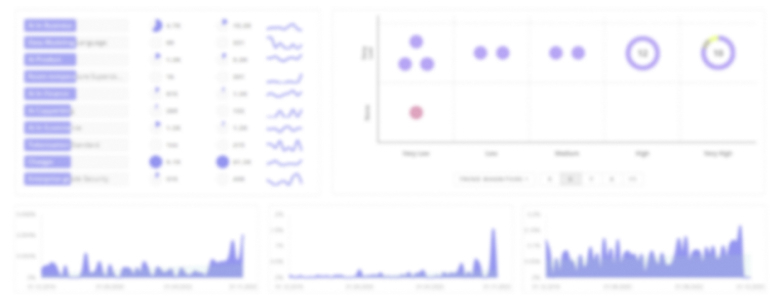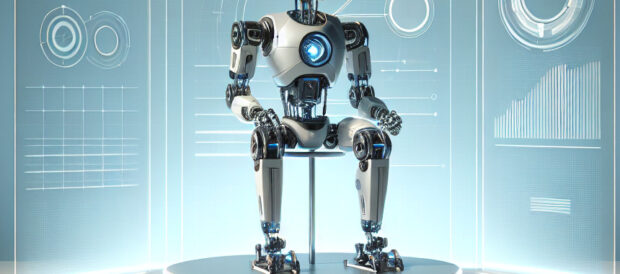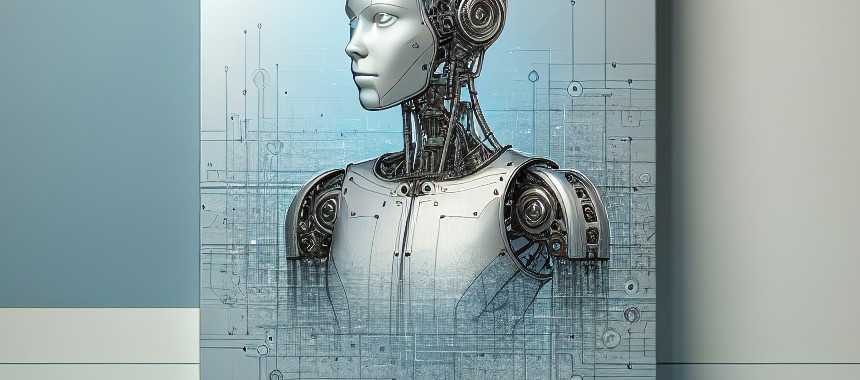
Humanoid Robot Report
: Analysis on the Market, Trends, and TechnologiesThe humanoid robot sector has expanded by 445.21% over the past five years and attracted $28.05 billion in funding across 1,523 companies, signaling a clear transition from prototype to early commercial deployment in industries facing acute labor shortages.
We updated this report 64 days ago. Missing information? Contact us to add your insights.
Topic Dominance Index of Humanoid Robot
The Topic Dominance Index combines the distribution of news articles that mention Humanoid Robot, the timeline of newly founded companies working within this sector, and the share of voice within the global search data
Key Activities and Applications
- Industrial Automation and Manufacturing: Humanoid robots are integrated into assembly lines and quality inspection processes to boost throughput and address workforce gaps (Figure 02 Humanoid Robot Impresses At BMW Plant With 400% Efficiency Upgrade).
- Logistics and Warehousing: Structured warehouse environments host humanoid robots for picking, sorting, and palletizing, leveraging their human-like form to navigate existing racking systems (This Is The World’s First Humanoid Robot Factory – And It Will Ship Digits In 2024).
- Healthcare and Eldercare: Robots with emotional recognition and conversational abilities assist with patient engagement and routine monitoring, extending caregiver reach in eldercare facilities (This Chinese University Has Unveiled An Emotional Humanoid Robot At An AI Conference).
- Customer Service and Companionship: Service robots deployed in hotels, retail, and public spaces provide information, wayfinding, and companionship, improving user experience without replacing human hosts (Humanoid robots: Friends, Not Just Workers?).
- Research and Development Platforms: Humanoid platforms serve as testbeds for AI, control algorithms, and sensor integration, accelerating innovation in robotics and allied fields (InventHelp Inventor Develops Robot with Humanoid Form (DCD-490)).
Emergent Trends and Core Insights
- AI Integration for Enhanced Capabilities: Integration of large language models and deep learning enables robots to interpret natural language, learn from demonstration, and adapt to new tasks dynamically (Figure says its new humanoid robot can chat and learn from its mistakes).
- Focus on Dexterity and Human-Like Motion: Research advances yield smoother bipedal walking and precise manipulation, allowing robots to handle delicate operations such as assembly or medical assistance (Brainy New US Humanoid Robots Walk Like Humans With Smooth Heel Strikes).
- Cost Reduction and Accessibility: Entry-level humanoid models priced under $6,000 broaden adoption in education and small businesses, signaling a shift toward mass-market viability (A Humanoid Robot Is Now On Sale For Under $6,000 – But What Can You Do With It?).
- Increased Degrees of Freedom and Sensor Integration: New robots boast over 50 degrees of freedom and integrate LiDAR, 3D vision, and tactile sensors to navigate and interact in unstructured human environments (China’s New Humanoid Robot Boasts 52 Degrees Of Freedom And An 8-hour Stamina).
- Global Competition and Investment Surge: Forecasts predict a 14-fold market expansion within five years, driven by intense R&D and funding from both private and public sectors across the US, China, and Europe (Humanoid robots forecast to see ‘14-fold market expansion in five years’).
Technologies and Methodologies
- Advanced AI and Machine Learning: Deep reinforcement learning, NLP, and computer vision are foundational, enabling autonomous decision-making and natural interactions (Figure AI Is Supercharging Humanoid Robots—Here's How It Works).
- Sophisticated Locomotion and Balance Control: Dynamic gait planning and fall recovery frameworks permit stable bipedal movement over varied terrain (Humanoid robots can swiftly get up after they fall with new learning framework).
- Dexterous Manipulation and Tactile Sensing: Multi-joint robotic hands with embedded pressure and force sensors deliver human-like grip and feedback for complex assembly or caregiving tasks (Figure AI Unveils Advanced Humanoid Robot: Figure 02).
- Sensor Fusion and Environmental Perception: Fusion of RGB cameras, LiDAR, and IMUs constructs high-resolution environmental maps to guide navigation and object recognition (The post 4. Humanoid Robotics appeared first on Nanotechnology Market Research).
- Modular Design and Open-Source Collaboration: Modular hardware and open software stacks accelerate customization, reduce development cycles, and foster community-driven innovation (Hugging Face unveils two new humanoid robots).
Humanoid Robot Funding
A total of 330 Humanoid Robot companies have received funding.
Overall, Humanoid Robot companies have raised $24.0B.
Companies within the Humanoid Robot domain have secured capital from 1.3K funding rounds.
The chart shows the funding trendline of Humanoid Robot companies over the last 5 years
Humanoid Robot Companies
- Devanthro – the Robody Company specializes in humanoid avatars for live-in eldercare, combining telepresence and empathetic interaction to bridge talent gaps in home care; it has raised seed-stage backing and employs 11 staff focused on healthcare applications.
- Ai-Da Robot is an AI-powered humanoid artist that uses computer vision and robotic arms to draw, paint, and sculpt, demonstrating the creative potential of human-robot collaboration; the project is led by a single employee in Oxford.
- Sarcomere Dynamics develops compact, high-dexterity robotic hands with real-time force control, enabling robots to handle fragile objects and perform intricate tasks across manufacturing and research; backed by a $10 M Series A round with a team of 14.
- Engineered Arts is the UK’s leading designer of interactive humanoid robots for entertainment and education, with products like Ameca showcasing advanced facial expressiveness and social interaction, supported by a $23 M Series A round and a core team of one for bespoke installations.
Gain a competitive edge with access to 1.9K Humanoid Robot companies.
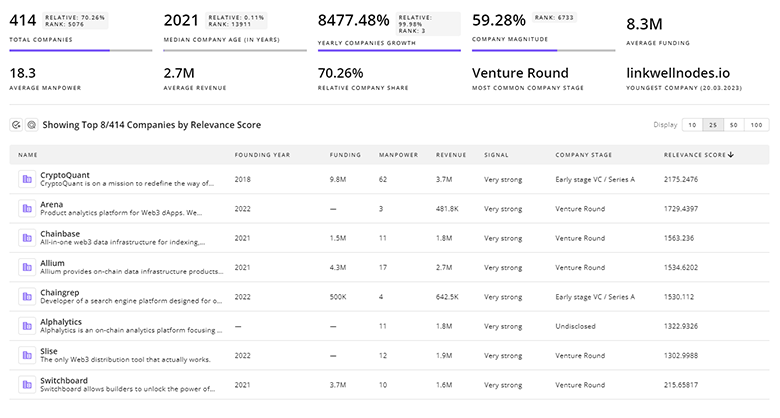
1.9K Humanoid Robot Companies
Discover Humanoid Robot Companies, their Funding, Manpower, Revenues, Stages, and much more
Humanoid Robot Investors
Leverage TrendFeedr’s sophisticated investment intelligence into 1.7K Humanoid Robot investors. It covers funding rounds, investor activity, and key financial metrics in Humanoid Robot. investors tool is ideal for business strategists and investment experts as it offers crucial insights needed to seize investment opportunities.
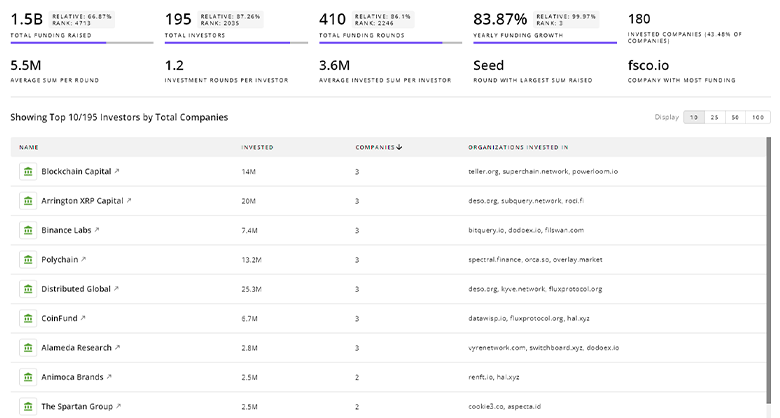
1.7K Humanoid Robot Investors
Discover Humanoid Robot Investors, Funding Rounds, Invested Amounts, and Funding Growth
Humanoid Robot News
TrendFeedr’s News feature provides a historical overview and current momentum of Humanoid Robot by analyzing 16.0K news articles. This tool allows market analysts and strategists to align with latest market developments.

16.0K Humanoid Robot News Articles
Discover Latest Humanoid Robot Articles, News Magnitude, Publication Propagation, Yearly Growth, and Strongest Publications
Executive Summary
The humanoid robot landscape is shifting decisively toward real-world applications, with investments and technology converging to solve labor shortages in manufacturing, logistics, healthcare, and beyond. Key drivers include AI-powered autonomy, enhanced dexterity, and cost reduction, while collaborative frameworks ensure safe integration alongside humans. Success in this sector will hinge on aligning robot capabilities with specific operational needs, leveraging open platforms for rapid iteration, and navigating regulatory and social acceptance challenges. Stakeholders should focus on partnerships that blend specialized solutions—such as dexterous hands or conversational AI—with industrial-grade reliability to capture the next wave of market growth.
Interested in contributing your expertise on trends and tech? We’d love to hear from you.
